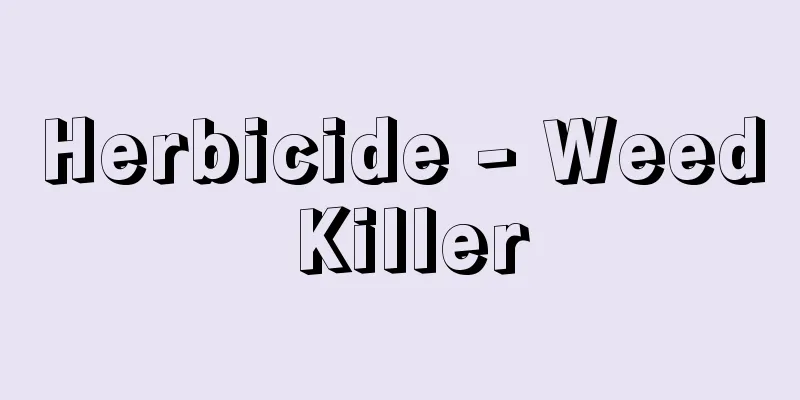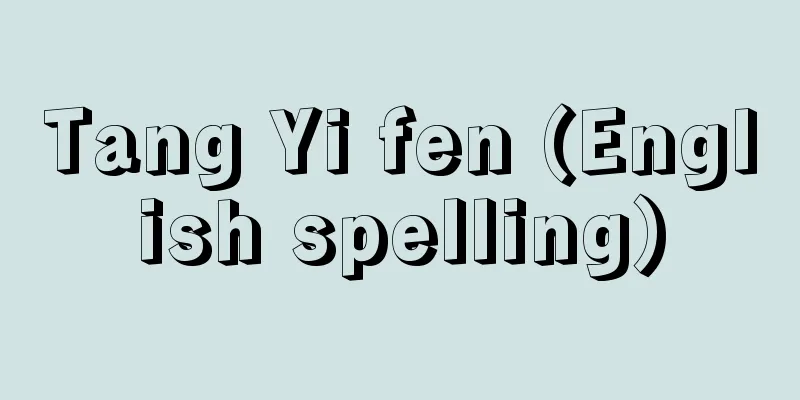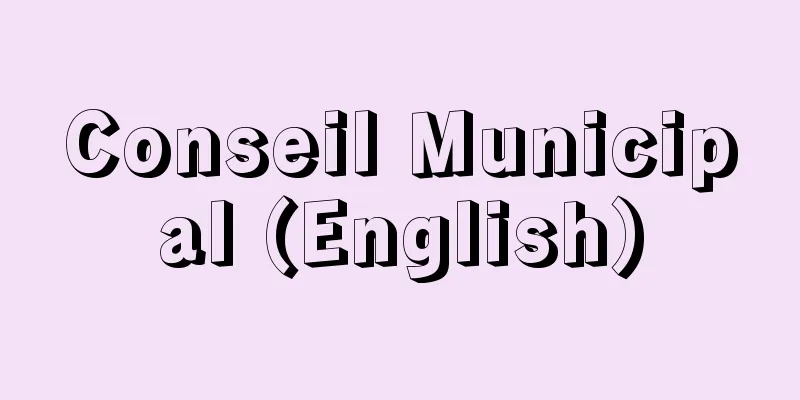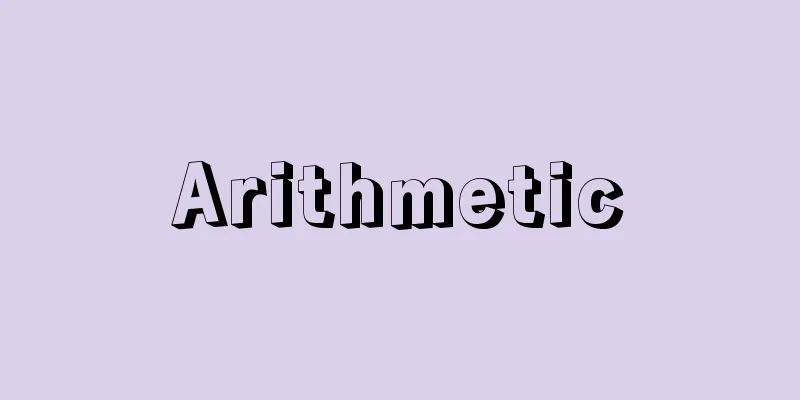Herbicide - Weed Killer

|
The Agricultural Chemicals Control Act does not have the term herbicide, so herbicides refer to other (non-pesticides) chemicals used to control plants that harm agricultural crops (including trees and agricultural and forestry products, hereafter referred to as agricultural crops, etc.). In other words, plants that harm agricultural crops, etc. are called weeds, and chemicals used to control weeds are herbicides. Agricultural crops, etc. compete with weeds for nutrients, water, light, and space, and weed control is necessary to ensure the yield and quality of agricultural crops, etc. Weed control is also necessary to increase the efficiency of agricultural work and suppress the occurrence of pests and diseases. [Tamura Hiroto] historyWeed control has traditionally been done by hand, which requires a lot of time and effort. In rice cultivation, tools such as rakes, raking scoops, and paddy-dragging cars were also used. In Japan, it was known in the late 18th century that calcium carbonate was effective against pine needles and copper sulfate was effective against Spirogyra. In the 1930s, dinitro- o -cresol, which was used as an insecticide, was found to have herbicidal activity, but it was highly toxic to other organisms. In the 1940s, 2,4-dichlorophenoxyacetic acid, which has a phenoxyacetic acid skeleton and disrupts the action of hormones (phytohormones) specific to plants and exerts selective herbicidal effects among plants, was discovered. Furthermore, herbicides that are safe for animals and have low environmental impacts have been developed to inhibit the physiological functions specific to plants, and today, herbicides that can be applied in amounts of less than 10 grams per hectare are available. Genetically modified crops that are resistant to herbicides have also appeared. [Tamura Hiroto] ClassificationHerbicides are required to be selective between crops and weeds because they target plants, and are divided into selective herbicides that are effective only on specific plant species, and non-selective herbicides that are effective on all plant species, including crops. Selective herbicides are further classified into broadleaf weed-selective herbicides that are effective on broadleaf (dicotyledonous) plants, and grass weed-selective herbicides that are effective on grass (monocotyledonous) plants. Herbicides are also classified according to the method of treatment: soil treatment agents, which are applied to the soil before or after seeds germinate, and foliage treatment agents, which are applied to the stems and leaves of weeds after germination. They are further divided into contact herbicides, which are effective where they are attached to the plant, and systemic herbicides, which are absorbed by the roots and stems and move throughout the plant body to be effective. Herbicides have undergone ingenuity in terms of application methods and formulations, and today there are formulations in which the herbicide is packaged in a water-soluble film or in the form of tablets that are thrown into the paddy field ridges, as well as formulations in which the undiluted solution is dropped directly into the water inlet of paddy fields and types that are attached to rice transplanters and sprayed over the entire surface. In this way, small-volume application technology has also advanced to reduce the burden on the environment. Some herbicides are effective by inhibiting physiological functions specific to plants. Depending on the inhibitory action, they are classified into plant hormone action disrupting herbicides, photosynthesis inhibiting herbicides, photopigment biosynthesis inhibiting herbicides, amino acid biosynthesis inhibiting herbicides, fatty acid biosynthesis inhibiting herbicides, cell division inhibiting herbicides, and cellulose biosynthesis inhibiting herbicides. [Tamura Hiroto] [Reference items] | | | | | | | | |Source: Shogakukan Encyclopedia Nipponica About Encyclopedia Nipponica Information | Legend |
|
農薬取締法には、除草剤という用語は存在しないため、除草剤は、農作物(樹木および農林産物を含む。以下、農作物等という)を害する植物の防除に用いられるその他(農薬以外)の薬剤をさす。つまり、農作物等を害する植物を雑草とよび、雑草の防除に用いられる薬剤が除草剤である。農作物等は、雑草と栄養、水、光そして空間を奪い合っており、農作物等の収穫量や品質を確保するためには雑草を防除する必要がある。また、農作業の作業効率を高め、病害虫の発生を抑制するためにも雑草防除は必要である。 [田村廣人] 歴史雑草の防除は、古くから人力による手作業が中心であり、多くの労力と時間を費やしていた。水稲栽培では、小熊手(こぐまで)、雁爪(がんづめ)および田打ち車等の道具も使用された。日本では、18世紀後半には、石灰窒素がマツバイに効果を示し、硫酸銅がアオミドロに有効であることが知られていた。1930年代には殺虫剤として使用されていたジニトロ-o(オルト)-クレゾールに除草活性が発見されたが、他の生物に対し強い毒性を示した。1940年代に植物に特有のホルモン(植物ホルモン)の作用を攪乱(かくらん)し、かつ、植物間で選択的な除草効果を発揮するフェノキシ酢酸を骨格とする2,4-ジクロロフェノキシ酢酸が発見された。さらに、植物特有の生理作用を阻害するために動物には安全性が高く、かつ、環境に負荷の少ない除草剤が開発され、今日では、1ヘクタール当りの施用量が10グラム未満の除草剤も登場している。また、除草剤に対し耐性を示す遺伝子組換え作物も登場した。 [田村廣人] 分類除草剤は、植物を対象とするため、農作物等と雑草との間で選択性が求められ、特定の植物種のみに効果を発揮する選択性除草剤と、農作物等を含むあらゆる植物種に効果を示す非選択性除草剤に分けられる。選択性除草剤は、さらに、広葉(双子葉)植物に効果を発揮する広葉雑草対象選択性除草剤とイネ科(単子葉)植物に効果を発揮するイネ科雑草対象選択性除草剤に分類される。 また除草剤の処理法により、種子が発芽する前後に土壌に処理(散布)する土壌処理剤と、発芽後に雑草の茎葉に処理する茎葉処理剤に分類される。さらに、付着した植物の部位で効果を発揮する接触型除草剤と、根や茎葉から吸収され植物体全体に移行し効果を発揮する浸透移行型除草剤に分けられる。なお、散布方法や製剤化がくふうされ、今日では、除草剤を水溶性フィルムに包装した剤型や錠剤の形態をとり水田の畦畔(けいはん)から投げ込む製剤、また、製剤化した原液を水田の水口に直接滴下するものや、田植機に取り付けて全面に散布するタイプもある。このように、環境への負荷を低減させるため、少量散布技術も進歩してきた。 植物特有の生理機能を阻害することにより、その効果を発揮する除草剤もある。その阻害作用により、植物ホルモン作用攪乱型除草剤、光合成阻害型除草剤、光色素生合成阻害型除草剤、アミノ酸生合成阻害型除草剤、脂肪酸生合成阻害型除草剤、細胞分裂阻害型除草剤、セルロース生合成阻害型除草剤などに分類される。 [田村廣人] [参照項目] | | | | | | | | |出典 小学館 日本大百科全書(ニッポニカ)日本大百科全書(ニッポニカ)について 情報 | 凡例 |
Recommend
Chinese hibiscus
...The plant commonly referred to as hibiscus is ...
Kazunogawa
(Otsuki City, Yamanashi Prefecture) A tourist attr...
Common name
...Plants are named according to the Internationa...
Otsu pitching - Otsunagubushi
...The melody line called "Tobushi" in ...
PAD - Pad
Packet Assembler and DisassemblerA device that con...
Gauri (Goddess) - Gauri
…Shiva's wife was Parvati (meaning "daug...
Hua Guofeng - Hua Guofeng
Chinese politician. Born in Jiaocheng County, Sha...
《Golden Water Great Cup》
...The deeds of Kibun were also recorded in essay...
Web - World Wide Web
A client-server system that structures information...
Vladimir Highway - Vladimir Highway
…Vladimir then existed merely as a provincial cit...
Heading up - Taito
This is a style of writing used to show respect fo...
Lord's candlestick
...The flower stalk is more than 1m long and grow...
ergative
…It has 5 vowel phonemes and 28 consonant phoneme...
Olympic Charter
This column lists the Fundamental Principles of O...
Sonagram
...An acoustic analysis device developed during W...









